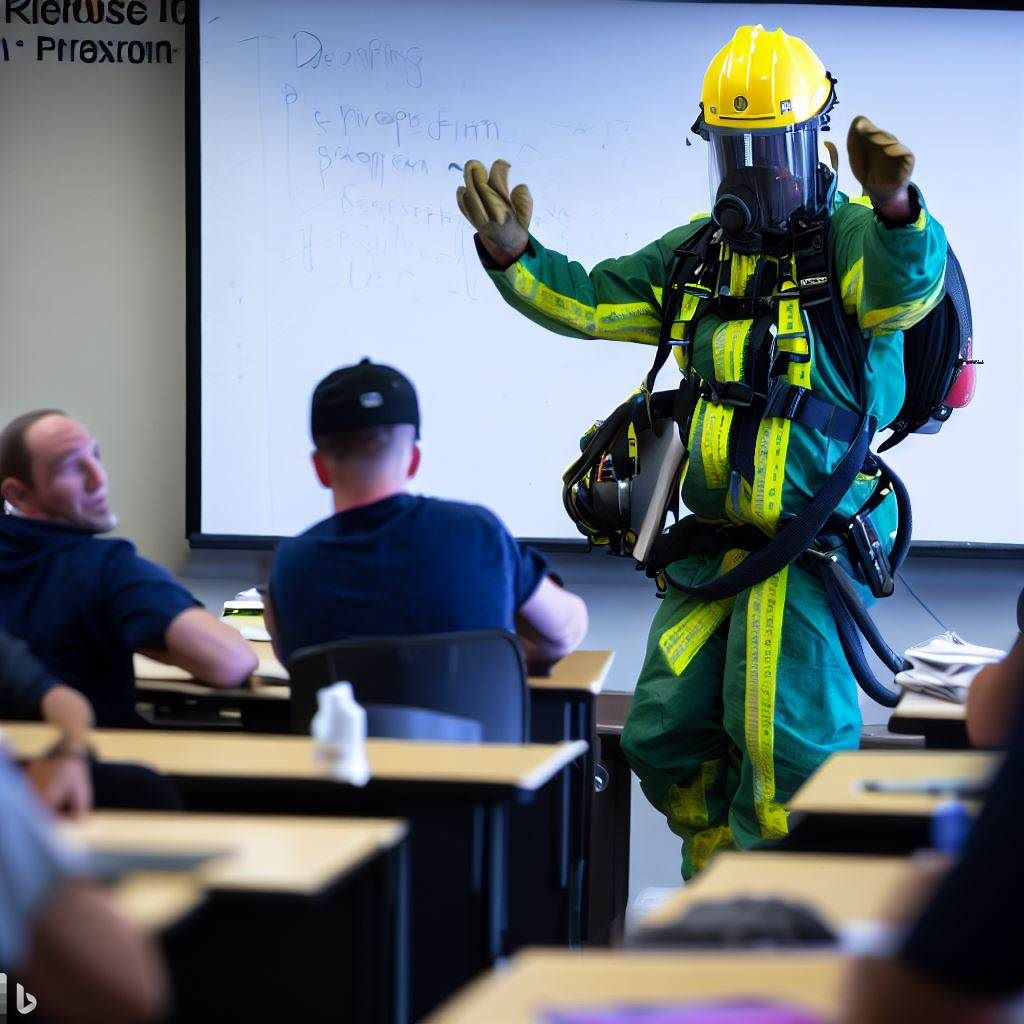Understanding the Frequency: How Often Is Confined Space Refresher Training Required?
In many industries, employees must work in confined spaces, which can pose various hazards and risks. To ensure the safety of these workers, proper training and education in confined spaces are essential. This article will delve into confined space refresher training, exploring its importance, factors affecting its frequency, and best practices for implementation.
What is confined space training?
Confined space training is specialized safety training focusing on the hazards and risks of working in confined spaces. Confined spaces are areas with limited access and egress, such as tanks, silos, pipelines, and tunnels. These areas can be particularly dangerous due to hazardous substances, lack of oxygen, or other dangerous conditions.
Confined space training provides employees with the knowledge and skills to work safely in these environments. This includes understanding the hazards and risks associated with confined spaces, proper use of personal protective equipment (PPE), emergency response procedures, and safe work practices. Confined space training aims to reduce the likelihood of accidents and injuries while working in these hazardous environments.

Importance of confined space training for workplace safety
Confined space training ensures workplace safety for employees who work in or around confined spaces. Without proper training, workers may not fully understand the risks associated with confined spaces and may not take the necessary precautions to protect themselves and their coworkers.
By providing employees with the knowledge and skills needed to work safely in confined spaces, employers can reduce the potential for accidents, injuries, and fatalities. Additionally, proper confined space training can help employers comply with regulatory requirements and avoid costly fines and penalties associated with non-compliance.
Factors determining how often confined space refresher training is required
Several factors can influence how often confined space refresher training is required. These factors include:
- Regulatory requirements: Local, state, and federal regulations may dictate the frequency of confined space refresher training. Employers should be familiar with the regulations that apply to their industry and location to ensure compliance.
- Changes in the workplace: If significant changes, such as new equipment, processes, or confined spaces, additional refresher training may be necessary to ensure employees know the new hazards and risks.
- Employee turnover: High turnover rates can result in losing institutional knowledge and experience. Frequent refresher training can help ensure that all employees, including new hires, are adequately trained and aware of confined space hazards.
- Incidents and near misses: If there have been recent incidents or near misses involving confined spaces, refresher training may be necessary to address gaps in knowledge or skills.
- Employee performance: If employees struggle to demonstrate competency in their confined space training, more frequent refresher training may be needed to reinforce essential skills and knowledge.
Regulatory requirements for confined space refresher training
In the United States, the Occupational Safety and Health Administration (OSHA) sets the standards for confined space training. According to OSHA’s 29 CFR 1910.146 regulation, employers must provide confined space training to all employees required to work in or around permit-required confined spaces.
While OSHA does not explicitly state how often confined space refresher training is required, the regulation does state that retraining must be provided when:
- There is a change in the workplace that presents a new hazard.
- There is a change in the confined space entry procedures.
- An employee’s job duties change, affecting their confined space responsibilities.
- An employee lacks understanding or skill in performing confined space tasks.
Employers should consult their state and local regulations to determine if there are any additional requirements for confined space refresher training.
Best practices for determining confined space refresher training frequency
To ensure that employees are adequately trained and competent in confined space safety, employers should consider implementing the following best practices:
- Regularly assess employee performance: By regularly evaluating employee performance in confined space tasks, employers can identify gaps in knowledge and skills that may require additional refresher training.
- Establish a refresher training schedule: Employers should establish a refresher training schedule based on regulatory requirements and the unique needs of their workplace. This may include annual refreshers or more frequent training based on employee performance, workplace changes, and other factors.
- Tailor refresher training to individual needs: Refresher training should be tailored to address the specific needs of individual employees, focusing on areas where they may struggle or require additional reinforcement.
- Monitor changes in the workplace: Employers should remain vigilant for any changes that may necessitate additional refresher training, such as new equipment, processes, or confined spaces.
Challenges in maintaining confined space training compliance
Compliance with confined space training requirements can be challenging for employers, particularly those with large workforces or multiple worksites. Some common challenges include:
- Keeping track of training records: Ensuring all employees have completed the required training and maintaining accurate records can be time-consuming and complex.
- Coordinating refresher training: Scheduling and coordinating refresher training for all employees can be logistically challenging, particularly for large organizations or those with multiple worksites.
- Adapting to regulatory changes: Staying up-to-date with changes in confined space regulations and adjusting training programs accordingly can be a significant challenge.
- Ensuring consistent training across the organization: Providing consistent, high-quality confined space training to all employees, regardless of location or job role, can be difficult.
Tips for effective confined space refresher training
To ensure that your confined space refresher training is effective, consider implementing the following tips:
- Use various training methods: Incorporate various training methods, such as classroom instruction, hands-on exercises, and online modules, to engage employees and reinforce key concepts.
- Make training relevant: Tailor your refresher training to address the hazards and risks in your workplace, making the training more meaningful and engaging for employees.
- Encourage employee participation: Encourage employees to actively participate in refresher training by asking questions, sharing experiences, and discussing potential scenarios.
- Reinforce key concepts: Continuously reinforce key confined space safety concepts throughout the training, ensuring employees retain this essential information.

Online and in-person confined space refresher training options
Employers have several options for providing confined space refresher training, including online and in-person training. Online training offers flexibility, accessibility, and the ability to track employee progress and completion. Conversely, in-person training provides opportunities for hands-on practice, group discussions, and personalized instruction.
The best approach for your organization will depend on your specific training needs, resources, and preferences. Many employers choose to incorporate a combination of online and in-person training to provide a well-rounded and engaging learning experience.
Conclusion and final thoughts on confined space refresher training frequency
Determining how often confined space refresher training is required depends on various factors, including regulatory requirements, workplace changes, employee performance, and incidents or near misses.
Employers should establish a refresher training schedule based on these factors and implement best practices to ensure that employees are adequately trained and competent in confined space safety. By providing effective refresher training, employers can help protect their employees, maintain compliance with regulations, and create a safer work environment.
Frequently Asked Questions:
Q: How often is confined space refresher training required?
A: The frequency of confined space refresher training depends on several factors, including regulatory requirements, workplace changes, employee performance, and incidents or near misses. Employers should establish a refresher training schedule based on these factors to ensure employees are adequately trained and competent in confined space safety.
Q: What are the challenges in maintaining confined space training compliance?
A: Some common challenges in maintaining confined space training compliance include keeping track of training records, coordinating refresher training, adapting to regulatory changes, and ensuring consistent training across the organization.
Q: What are the benefits of online and in-person confined space refresher training?
A: Online training offers flexibility, accessibility, and the ability to track employee progress and completion. In-person training provides opportunities for hands-on practice, group discussions, and personalized instruction. Many employers choose to incorporate a combination of online and in-person training to provide a well-rounded and engaging learning experience.
